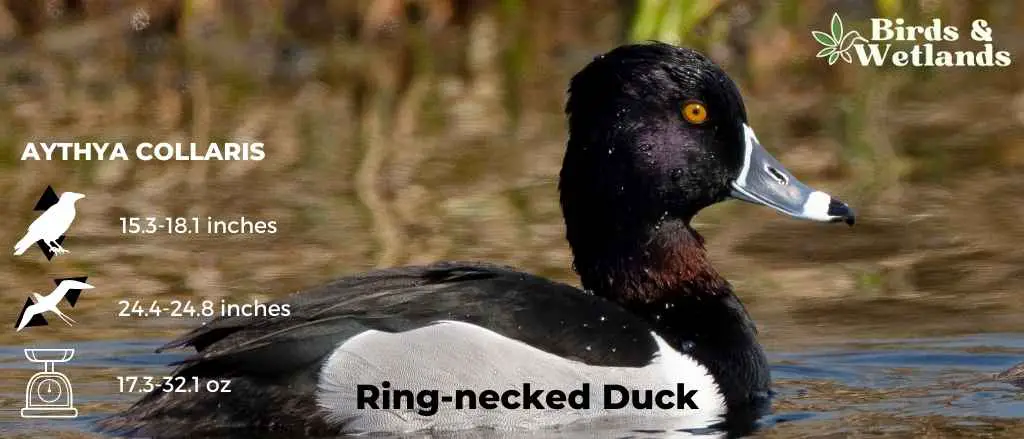The ring-necked duck (Aythya collaris) is a diving duck that is native to North America. It is named after the visible ring or collar at the base of its neck. It has a peaked head, black neck, sloping forehead and yellow eyes.
The scientific name for the species, Aythya collaris, also refers to this characteristic, with “aythya”, an unidentified seabird that was mentioned in many ancient Greek texts and “collaris” meaning “of the neck” in Latin.
Scientific Name: Aythya collaris
Height: 15.3-18.1 in (39-46 cm)
Wingspan: 24.4-24.8 in (62-63 cm)
Weight: 17.3-32.1 oz (490-910 g)
Description
The adult male ring-necked duck looks similar to greater and lesser scaup. It has an angular black head and neck and a thin pale brown collar around the base of the neck. A white stripe separates its white flanks from the black breast.
The male’s bill is blue-gray with a black tip, and his eyes are golden yellow. He has blackish legs and webbed feet. A distinctive triangular white wedge is visible near the front of the folded wing.
The adult female ring-necked duck has a slender, angular body shape with a long neck and pointed head. The back of the head and upper neck is dark brown to blackish, while the cheeks are pale.
The eyes are a pale brown color, surrounded by a white eye-ring. The white line extends to the ears. It has a gray bill with a prominent white ring or white band and a black nail.
Juveniles have a more rounded head with duller plumage.

Listen to the Ring-Necked Duck
Habitat & Range
The ring-necked duck is a waterfowl in North America and Canada. Its range extends from Central Canada down to Central and Western United States.
It is most likely found in freshwater marshes that contain emergent vegetation and woody plants along the banks of beaver ponds, wooded lakes and slow-moving rivers. They frequent smaller bodies of water but never saltwater bays.
The main breeding grounds for ring-necked ducks are located within the eastern boreal region, a vast area of coniferous trees across much of Canada and Alaska. However, they can also be found in lesser amounts throughout Eastern Canada.
Their fall migration usually starts in late September to early December. In the winter, many ring-necked ducks will migrate with small flocks of dabbling ducks to areas with more temperate climates, such as the southern United States, northern Mexico and other parts of Central America.
Here, they will find more suitable conditions for feeding and can avoid the cold temperatures and limited food supplies of the north of winter.
Some ring-necked ducks may also remain in the northern parts of their range during the winter if enough open water and food are available.
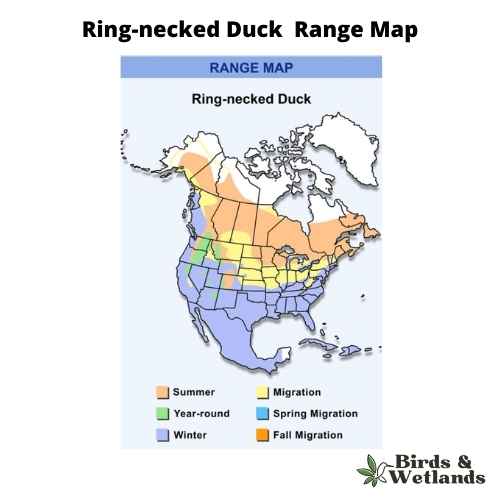
Diet & Food Habits
The Ring-necked Duck is an omnivorous waterfowl that mainly feeds on aquatic plants and insects. Its diet varies with the season and habitat but typically includes submerged aquatic vegetation, pondweeds, sedges, smartweeds, grasses, algae, and other plant-based food items.
Occasionally, it will supplement its diet with various aquatic insects, mollusks, snails, mussels, small fish and aquatic invertebrates.
Like other diving ducks, the ring-necked duck forages for its food by diving underwater to depths of about 12 meters and dabbling at the surface to filter mud for food items. In addition, it will scavenge from gravel bars or uproot plants with its bill while searching for food in shallow waters.
During the winter, they may fly great distances in search of more abundant food sources when their usual habitats become depleted.
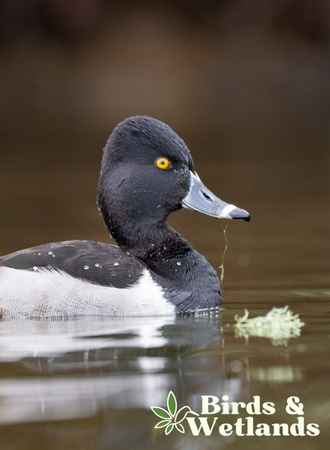
Nesting & Mating Habits
The breeding season of the ring-necked ducks usually starts in May. Depending on the individual bird and its environment, some ducks may begin early or late.
These diving ducks typically form pairs during spring migration. The male will perform elaborate courtship displays to attract a mate.
Once a pair has formed, the female will build a nest on the ground near water, using grass, leaves, and other materials to construct a shallow bowl. Some ducks build nests on a mat of floating vegetation.
The female lays a clutch of 8 to 12 eggs and incubates them for about 25 to 30 days until they hatch into young ducklings. The pair bond ends shortly before the incubation period starts.
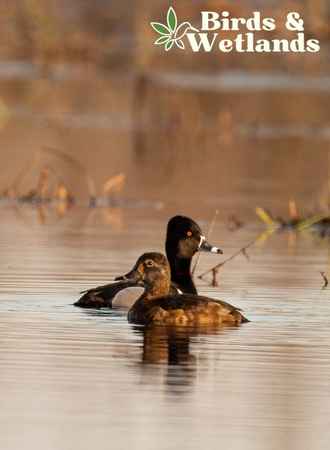
Population & Conservation Status
The IUCN has listed this species as Least Concern due to its widespread breeding range and large population size.
Though some populations may be experiencing localized declines from habitat destruction and other human activities, these losses are not significant enough to cause any negative impacts on the overall population.
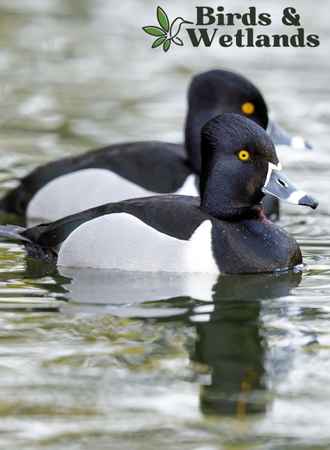
Hunting
Ringnecks are some of the most popular gamebirds in the United States. Hunting this bird in many states during the waterfowl hunting season is legal. However, hunting is subject to daily bag and possession limits.
Key Points
- The ring-necked duck eats both plant and animal matter.
- It is a small diving duck native to North America.
- Like many diving ducks, it dives in shallow water to search for food.
- The female has a pale cheek and a white patch on its bill.

